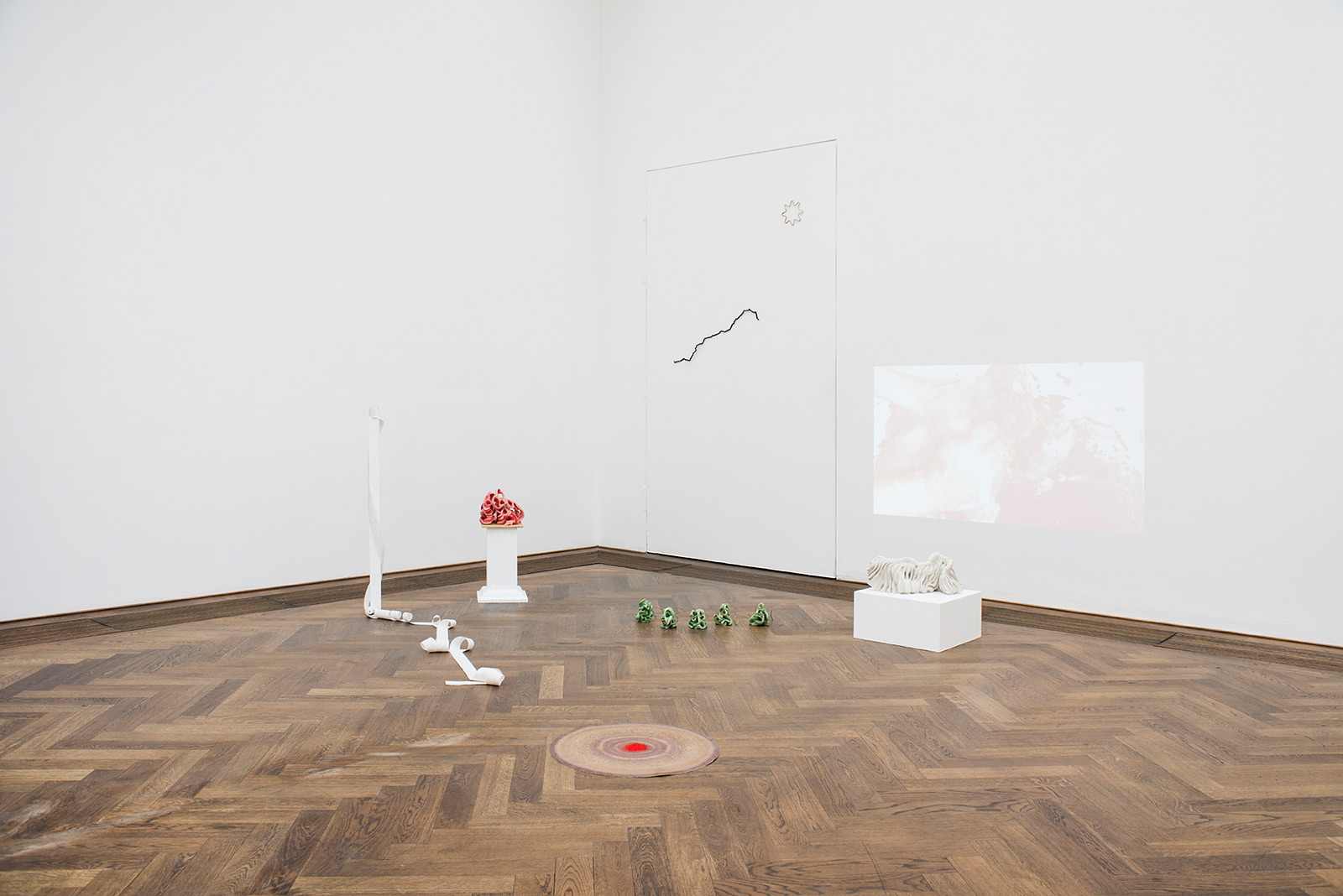Institut Kunst / Master
Fanny Jemmely
Field of Mutations
A multitude of objects out of different technics regularly used in my artistic practice is gathered in this Field of Mutations, an installation oscillating between a quite classical presentation making use of several white pedestals, and a certain fragility considering the ephemerality of some pieces and the waste materials. Here, a few found objects – a piece of sanding paper and its heap of red pigments laying in the middle, a rusted bicycle chain, a paper roll out of a cash register covered by thin lines and an undefined curved plastic object – are holding a dialog with unfired clay sculptures and a video projection.
A series of three-dimensional organisms, which unceasingly modify their actual forms in a continuum of time, embody an ordinarily imperceptible movement. The rose coloured form on the Doric column stands for the ironical result of the hectic process of realization which is perpetrated into the video work. In this projection, accompanied by a saturated noise reminding of a case of emergency, a pair of hands is manipulating an apparently bloody mass of clay. These gestures imply efforts towards renewed settings, temporary crystallisations of a shape which constantly has to deal with collapses of its own matter.
The whole composition is built as an open and panoramic landscape in order to generate many paths of interpretation in the viewer’s mind. At the same time, it concentrates itself around a blurry centre, the notion of “becoming”. This word, as wide as a blank page, is therefore often relegated to the metaphysical realm. Those chosen fragments manifest diverse aspects of this term, definable as a constant process of transformation. The ensemble aims to put light on the human potential to model subjectivities, to draw personal as well as collective trajectories.
In the revealed fluid universe, this exuberant immanence field, what kind of operations could be triggered to liberate the current of life where it might present points of interruption or decrease? How to reactivate, in our times, in each situation, the crucial potential inherent in the artistic activity, its aptitude to unleash possibilities?

